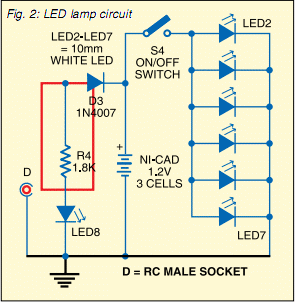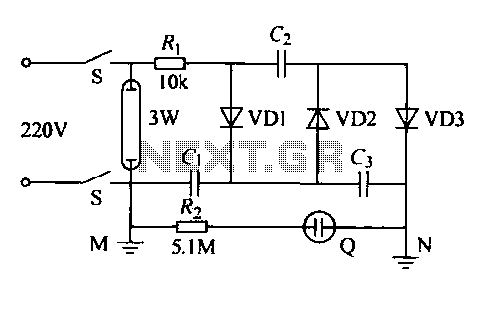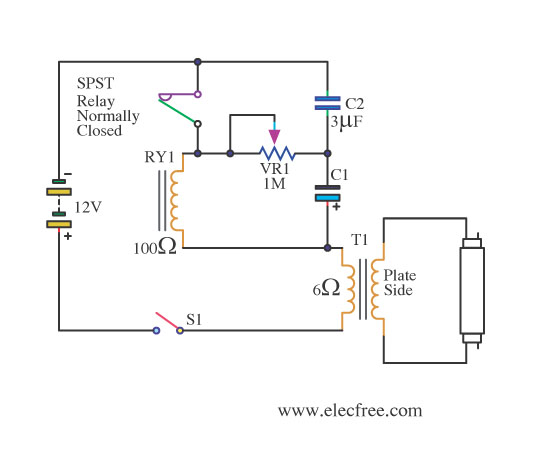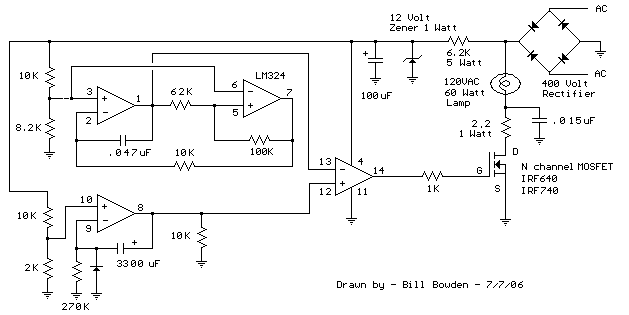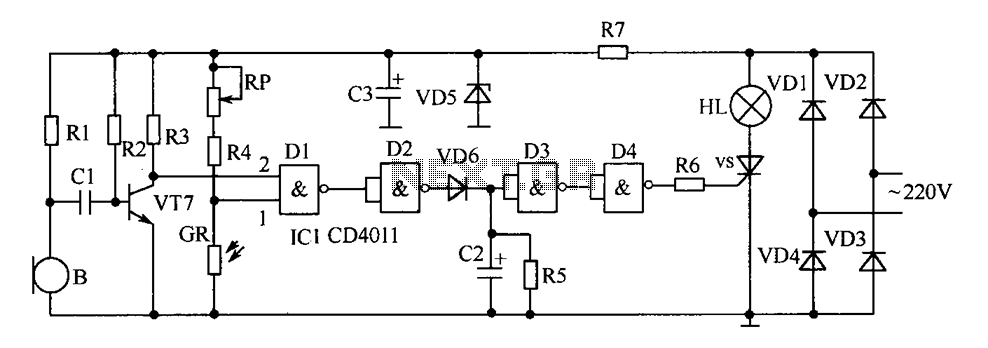
sunrise lamp
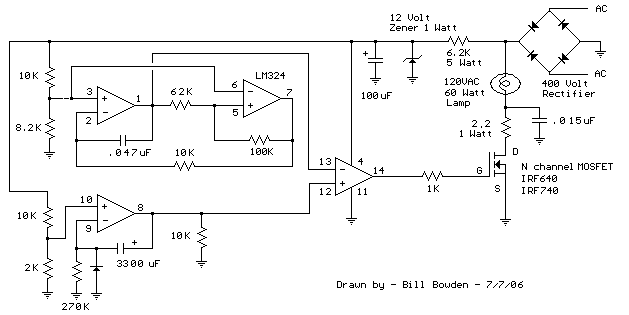
This circuit gradually illuminates a 120VAC lamp over an approximate 20-minute period. A bridge rectifier provides 120V DC to the MOSFET and the 60-watt lamp. A 6.2K, 5-watt resistor along with a Zener diode is utilized to reduce the voltage to 12 volts DC for circuit power. The bridge rectifier should be rated for 200 volts and 5 amps or more. During operation, a 700 Hz triangle waveform is generated at pin 1 of the LM324, resulting in a slow rising voltage at pin 8.
The circuit design incorporates several key components that work in conjunction to achieve the desired soft start for the lamp. The bridge rectifier, consisting of four diodes configured in a full-wave arrangement, converts the 120VAC input to a pulsating DC voltage. The choice of a bridge rectifier rated for at least 200 volts and 5 amps ensures that it can handle the peak voltage and current demands of the circuit without failure.
The output from the bridge rectifier is fed into a MOSFET, which acts as a switch to control the power delivered to the lamp. The MOSFET is chosen for its efficiency and fast switching capabilities, allowing for precise control over the lamp's illumination. The 60-watt lamp receives power from the MOSFET, which is modulated to achieve the gradual illumination effect.
To provide the necessary operating voltage for the rest of the circuit, a 6.2K, 5-watt resistor and a Zener diode are employed. The resistor limits the current flowing into the Zener diode, which clamps the voltage to a stable 12 volts DC. This regulated voltage powers the control circuitry, including the LM324 operational amplifier.
The LM324 is configured to generate a 700 Hz triangle waveform at pin 1, which is essential for creating the slow rise in voltage observed at pin 8. This waveform is used to drive the gate of the MOSFET, allowing the MOSFET to turn on gradually. As the voltage at pin 8 rises, it causes the MOSFET to conduct more, thereby increasing the power supplied to the lamp slowly over the specified 20-minute period.
Overall, this circuit effectively demonstrates the principles of power control and voltage regulation, utilizing common electronic components to achieve a specific operational goal of soft-starting a lamp.In this circuit, a 120VAC lamp is slowly illuminated over a approximate 20 minute period. The bridge rectifier supplies 120 DC to the MOSFET and 60 watt lamp. A 6.2K, 5 watt resistor and zener diode is used to drop the voltage to 12 volts DC for the circuit power. The bridge rectifier should be rated at 200 volts and 5 amps or more. In operation, a 700 Hz triangle waveform is generated at pin 1 of the LM324 and a slow rising voltage is obtained at pin 8..
🔗 External reference
The circuit design incorporates several key components that work in conjunction to achieve the desired soft start for the lamp. The bridge rectifier, consisting of four diodes configured in a full-wave arrangement, converts the 120VAC input to a pulsating DC voltage. The choice of a bridge rectifier rated for at least 200 volts and 5 amps ensures that it can handle the peak voltage and current demands of the circuit without failure.
The output from the bridge rectifier is fed into a MOSFET, which acts as a switch to control the power delivered to the lamp. The MOSFET is chosen for its efficiency and fast switching capabilities, allowing for precise control over the lamp's illumination. The 60-watt lamp receives power from the MOSFET, which is modulated to achieve the gradual illumination effect.
To provide the necessary operating voltage for the rest of the circuit, a 6.2K, 5-watt resistor and a Zener diode are employed. The resistor limits the current flowing into the Zener diode, which clamps the voltage to a stable 12 volts DC. This regulated voltage powers the control circuitry, including the LM324 operational amplifier.
The LM324 is configured to generate a 700 Hz triangle waveform at pin 1, which is essential for creating the slow rise in voltage observed at pin 8. This waveform is used to drive the gate of the MOSFET, allowing the MOSFET to turn on gradually. As the voltage at pin 8 rises, it causes the MOSFET to conduct more, thereby increasing the power supplied to the lamp slowly over the specified 20-minute period.
Overall, this circuit effectively demonstrates the principles of power control and voltage regulation, utilizing common electronic components to achieve a specific operational goal of soft-starting a lamp.In this circuit, a 120VAC lamp is slowly illuminated over a approximate 20 minute period. The bridge rectifier supplies 120 DC to the MOSFET and 60 watt lamp. A 6.2K, 5 watt resistor and zener diode is used to drop the voltage to 12 volts DC for the circuit power. The bridge rectifier should be rated at 200 volts and 5 amps or more. In operation, a 700 Hz triangle waveform is generated at pin 1 of the LM324 and a slow rising voltage is obtained at pin 8..
🔗 External reference
